Easy Lab With Gases and Pressure Elementary
Chemistry is so much fun and we have tons of cool chemistry experiments to share with you. Just like our awesome physics experiments, we decided we needed to put together a list of fun chemistry projects that kids can do at home or in the classroom. Check out these examples of easy chemical reactions below!
COOL CHEMISTRY EXPERIMENTS FOR KIDS!
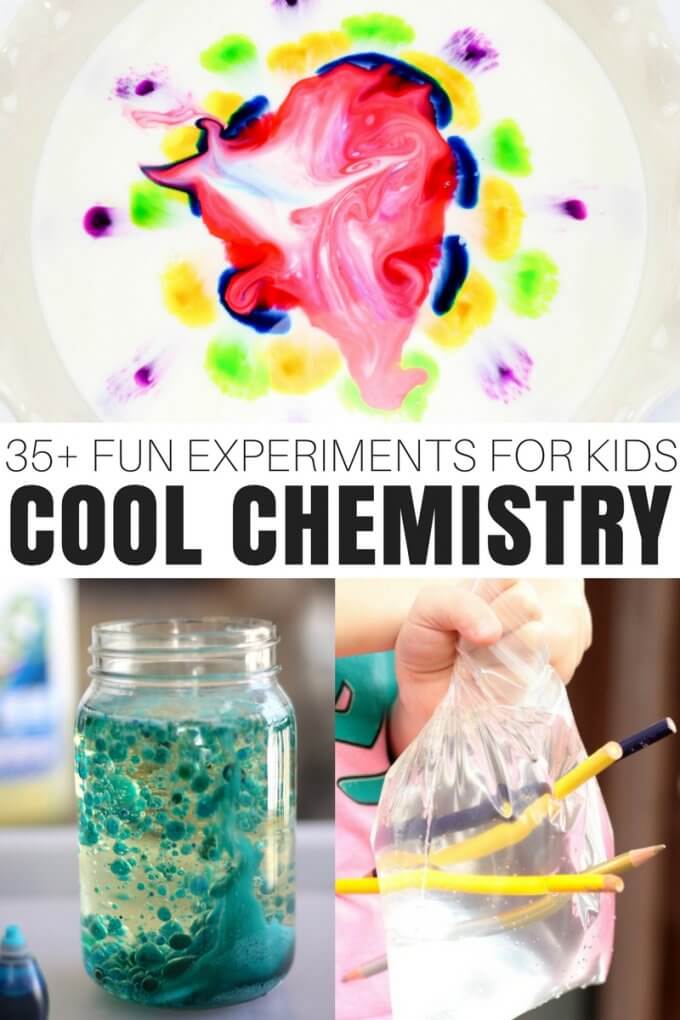
CHEMISTRY PROJECTS FOR KIDS
Here you will find over 30 simple chemistry experiments for kindergarten, preschoolers, and elementary kids to enjoy at home or in the classroom. The only difficulty will be deciding which science experiment you will want to try first.
Below you will find a fun mixture {no pun intended} of chemistry activities that include chemical reactions, mixing saturated solutions, acid and bases, exploring the solubility of both solids and liquids, growing crystals, making slime, and so much more!
Our science experiments are designed with you, the parent or teacher, in mind! Easy to set up, quick to do, most activities will take only 15 to 30 minutes to complete and are heaps of fun.
Plus, our supplies lists usually contain only free or cheap materials you can source from home. Any of these chemistry experiments below would be great for chemistry at home.
PRESCHOOL CHEMISTRY
Let's keep it basic for our younger or junior scientists! Chemistry is all about the way different materials are put together, and what they are made up of, think atoms and molecules.
It's also about how these materials act under different conditions. Chemistry is often a base for physics so you will see some overlap.
What might you experiment with in chemistry? Classically we think of a mad scientist and lots of bubbling beakers, and yes there is a chemical reaction between bases and acids to enjoy! However, chemistry also involves matter, chromatography, solutions, and the list goes on.
Science encourages curiosity and asking questions. These simple chemistry experiments below will also encourage problem-solving skills and observation skills. Even the youngest of kids can enjoy a simple science experiment.
Take for example our very first baking soda science experiment. So simple to set up, but so lovely to watch the amazement on my son's face.
That's the best part of science for kids. It surrounds them, and it's in every new experience they encounter! Whether you are exploring kitchen science or science in the backyard, each day is filled with an amazing new ideas and concepts just waiting to be discovered.
Encourage your kids above all to never stop questioning and by all means, try to answer those questions as best as possible or show them how you can find out the answers together. As parents, we don't have to know everything! But we do need to make sure we help our kids find the answers they are looking for.

CHEMISTRY AT HOME
Can you do cool chemistry experiments at home? You bet! Is it hard? Nope!
What do you need to get started? Simply get up, walk into the kitchen, and start rummaging through cupboards. You are sure to find some or all of the supplies you will need for these chemistry projects below.
Why not make up your own DIY science kit from inexpensive items from the grocery store or the dollar store, and items you may already have at home. Fill a plastic tote with supplies and you will have a science kit filled with learning opportunities that are sure to keep them busy all year long.
Check out our list of must have simple supplies for a science kit and a slime kit.
These science experiments to do at home work well with multiple age groups from preschool to elementary and beyond. Our activities have also been readily used with special needs groups in high school and young adult programs. Provide more or less adult supervision depending on your kids' abilities!
Read on to find out our favorite chemistry experiments you can do at home, that are totally do-able and make sense!
Click here to get your free printable science experiments pack!

65 CHEMISTRY EXPERIMENTS YOU WANT TO TRY
We have divided our list of chemistry experiments below into chemical reactions, acids and bases, chromatography, solutions, polymers, and crystals.
CHEMICAL REACTIONS
A chemical reaction is a process where two or more substances react together to form a new chemical substance. This might look like a gas being formed, cooking or baking, milk souring etc.
Sometimes a physical change occurs like our popcorn experiment or melting crayons rather than a chemical change. However these experiments below are all great examples of chemical change, where a new substance is formed.
Can chemical reactions happen safely at home or in the classroom? You betcha! This is one of the most fun parts of chemistry for kids and you will find lots of ideas below for safe chemical reactions you can do with your junior scientists.
Why Do Apples Turn Brown?
Acid Rain Experiment
Alka Seltzer Rockets
Baking Soda Vinegar Bottle Rocket
Lava Lamp Experiment
Egg Vinegar Experiment
Tie Dye Art
Green Penny Experiment

Milk and Vinegar
Seashells With Vinegar
Bread In A Bag
Photosynthesis
Yeast and Hydrogen Perioxide
Invisible Ink
Elephant Toothpaste
Pop Rocks and Soda
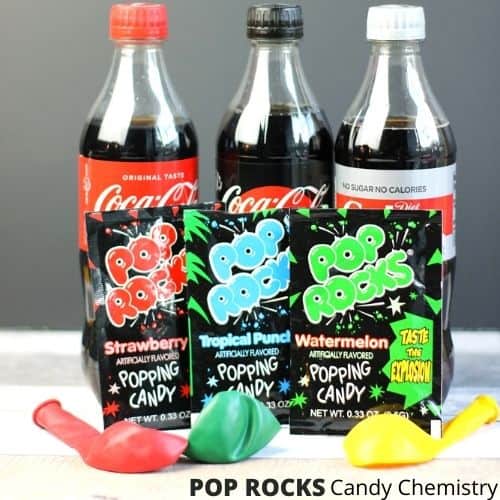
ACIDS AND BASES
Acids and bases are important for many chemical processes in everyday life. An acid has hydrogen ions and can donate protons. Acids taste sour and have a pH from 0 to 7. Vinegar and citric acid are examples of acids.
Bases are molecules that can accept hydrogen ions. They have a pH higher than 7 and can taste bitter. Sodium bicarbonate or baking soda and ammonia are examples of bases.
Acid and bases react with each other very easily. When you mix an acid and base together you get a chemical reaction that produces a salt and water.
Vinegar and baking soda is a classic acid-base reaction. We have so many fun variations that your kids will love to try! Check out these acid-base chemistry experiments below.
Citric Acid and Baking Soda
Lemon Volcano Experiment
Dancing Corn
Invisible Ink
Balloon Experiment
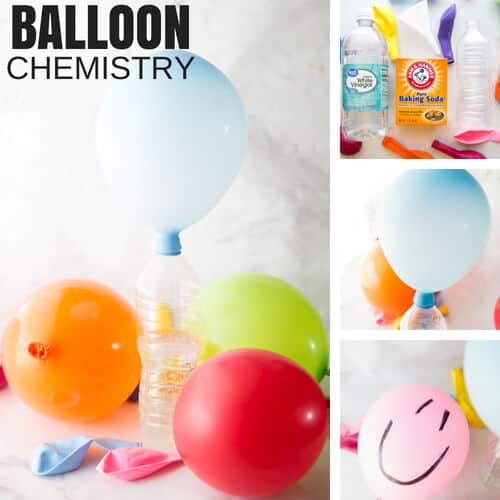
Cabbage pH Experiment
Fizzy Lemonade
Baking Soda and Vinegar Volcano
Watermelon Volcano
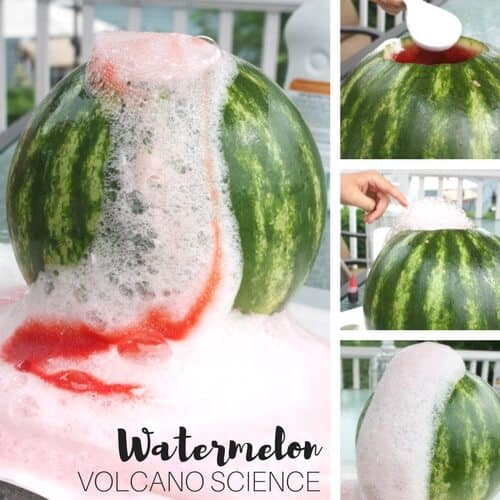
Snow Volcano
Lego Volcano
Fizzing Slime Volcano
Dying Eggs With Vinegar
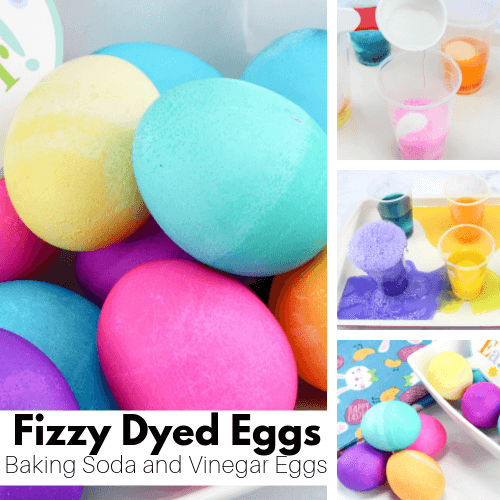
CHROMATOGRAPHY
Chromatography is a technique that involves the separation of a mixture into its parts so you can see each one individually.
Use chromatography to separate the pigments in a black marker in this chromatography lab.
Or set up an leaf chromatography experiment to find the hidden pigments in the leaves in your backyard!
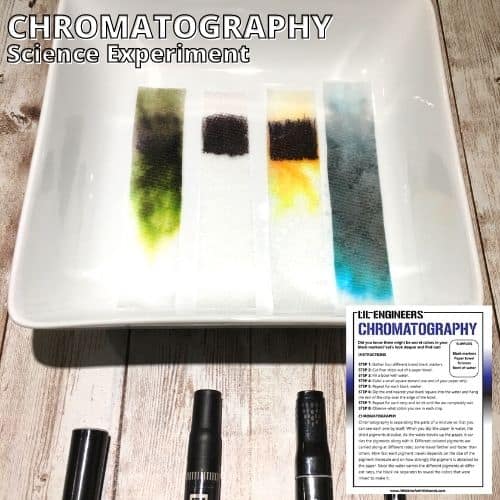
SOLUTIONS
A solution is a mixture of 2 or more solutes dissolved in a solvent up to its limit of solubility. It most often refers to liquids, but solutions or gases and solids is also possible.
A solution will have its components evenly distributed throughout the mixture.
Chemistry experiments involving solutions are great for kids. Gather liquids you commonly find in your kitchen, oil, water, detergent etc. and explore what dissolves.
What dissolves in water?
Gummy Bear Experiment
Skittles Experiment

Dissolving Candy Canes
Dissolving Candy Fish
Dissolving Candy Hearts
Paper Towel Art

Floating M Experiment
Fireworks In A Jar
Homemade Salad Dressing
Magic Milk Experiment
Ice Cream In A Bag
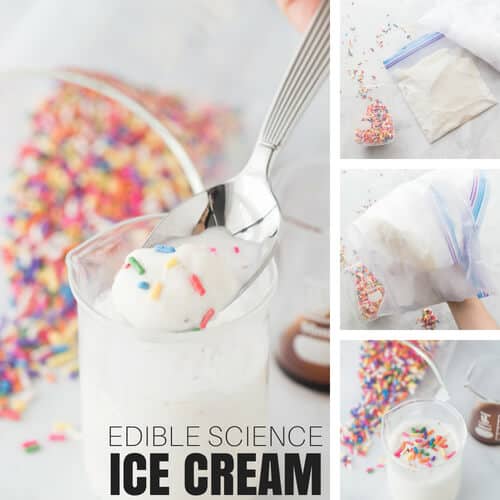
Want printable instructions for your chemistry experiments all in one place? It's time to join the Library Club!
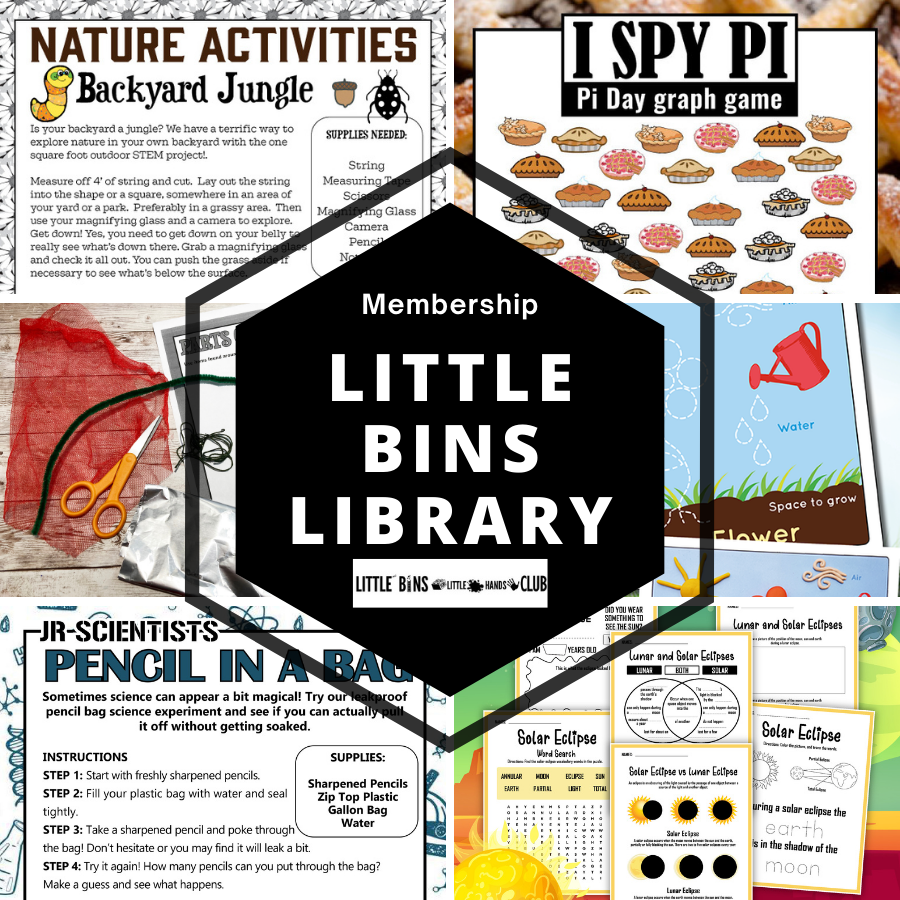
POLYMERS
A polymer is a very large molecule made up of many smaller molecules layered together in repeating patterns called monomers. Putty, slime and cornstarch are all examples of polymers. Learn more about the science of slime polymers.
Making slime is great for at home chemistry and is also tons of hands-on fun! Here's a few of our favorite slime recipes to get you started.
Putty Slime
Fluffy Slime

Borax Slime
Slime with Liquid Starch
Galaxy Slime
Cornstarch Slime
Cloud Slime
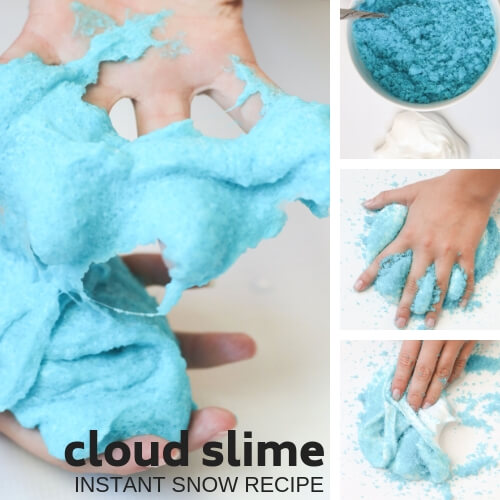
Slime with Clay
Clear Glue Slime
Magnetic Slime
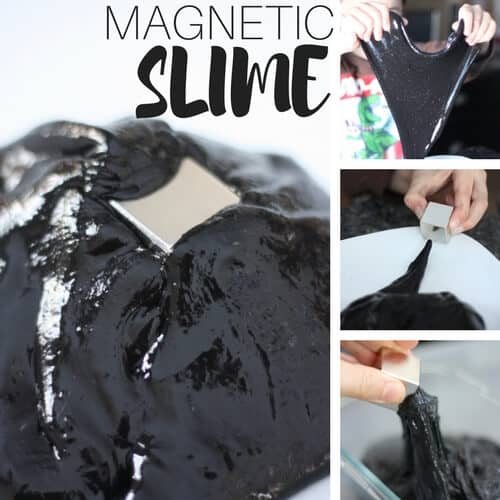
Explore polymers with a simple cornstarch and water mixture. Check out these fun variations of oobleck below.
Rainbow Oobleck
Dr Seuss Oobleck
Snowflake Oobleck
Candy Heart Oobleck

CRYSTALS
A crystal is a solid material that has a highly ordered internal structure of atoms, molecules, or ions which is held together by chemical bonds.
Grow crystals and observe them by mixing up a super saturated solution and leaving it for several days to let the crystals form.
Simple to grow and taste-safe, a sugar crystals experiment is easier for younger kids, but you can also try growing borax crystals for older kids too.
Check out our fun theme variations of growing crystals too!
Sugar Crystal Experiment
Grow Borax Crystals
Crystal Snowflakes
Rainbow Crystals
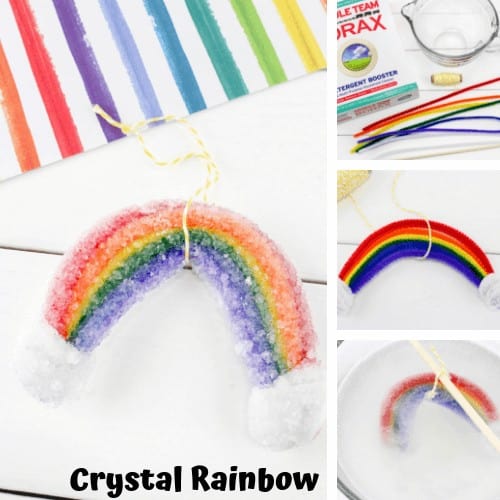
Grow Salt Crystals
Crystal Seashells
Crystal Leaves
Crystal Flowers
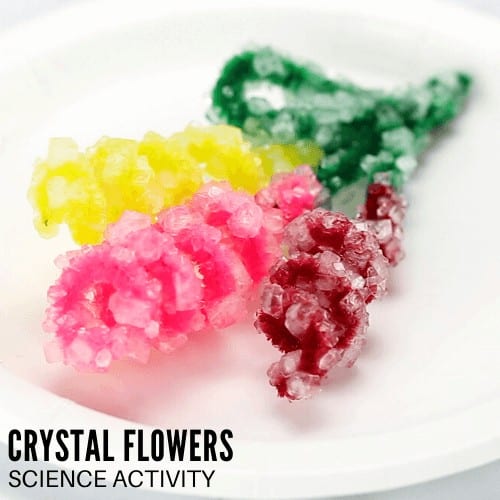
Crystal Hearts
Edible Geodes
Egg Shell Geodes
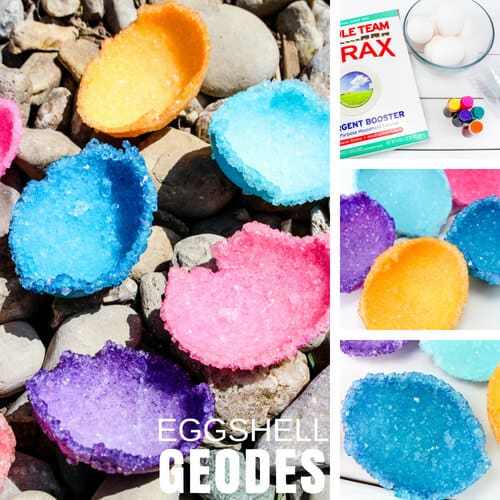
COOL CHEMISTRY EXPERIMENTS FOR KIDS!
Click on the link or on the image below for more awesome physics experiments for kids.
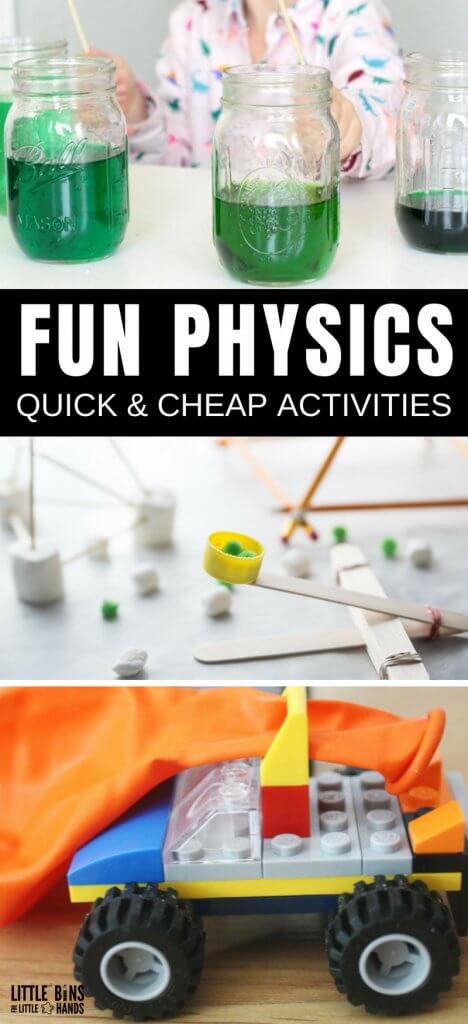
Source: https://littlebinsforlittlehands.com/chemistry-activities-experiments-kids/
0 Response to "Easy Lab With Gases and Pressure Elementary"
Post a Comment